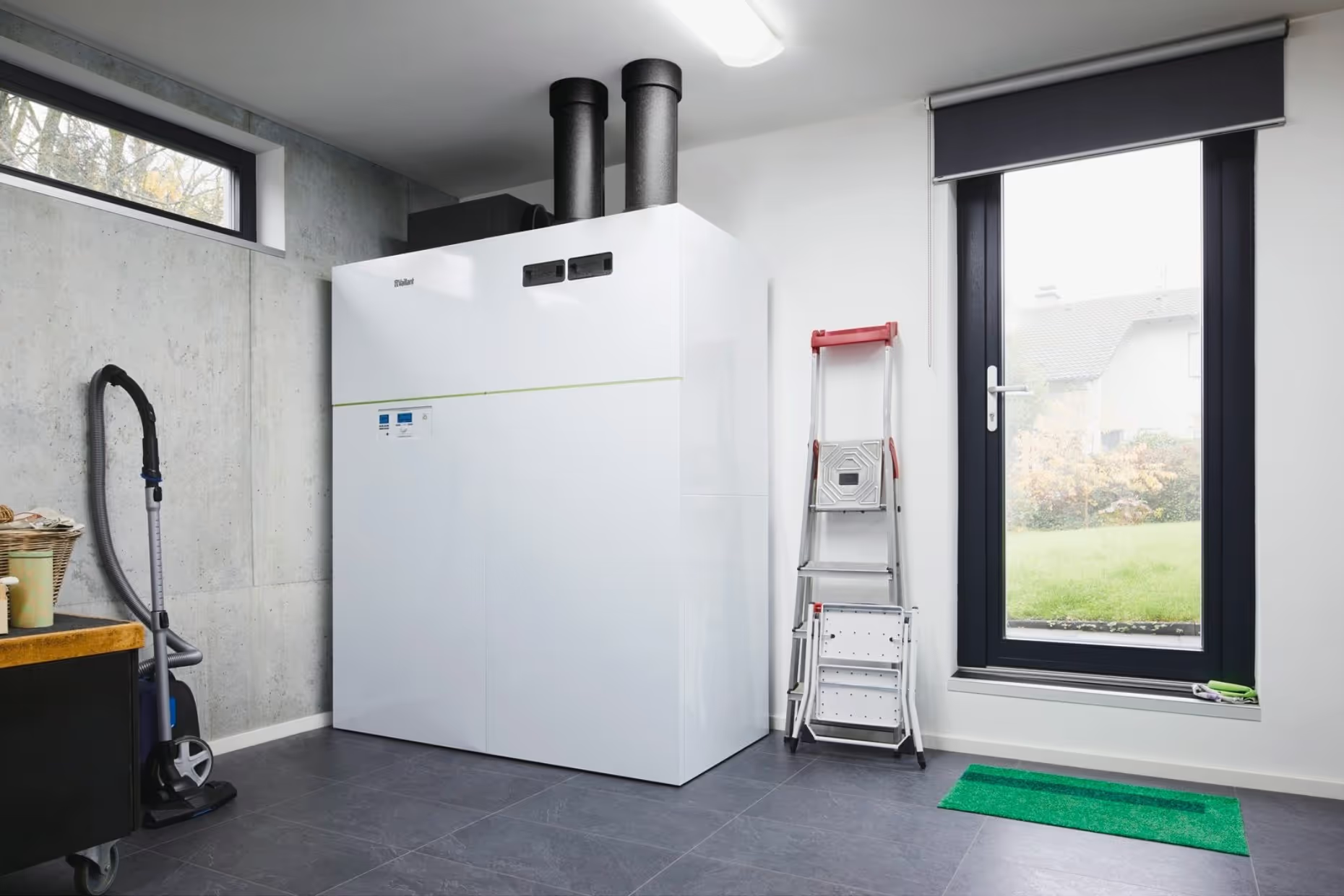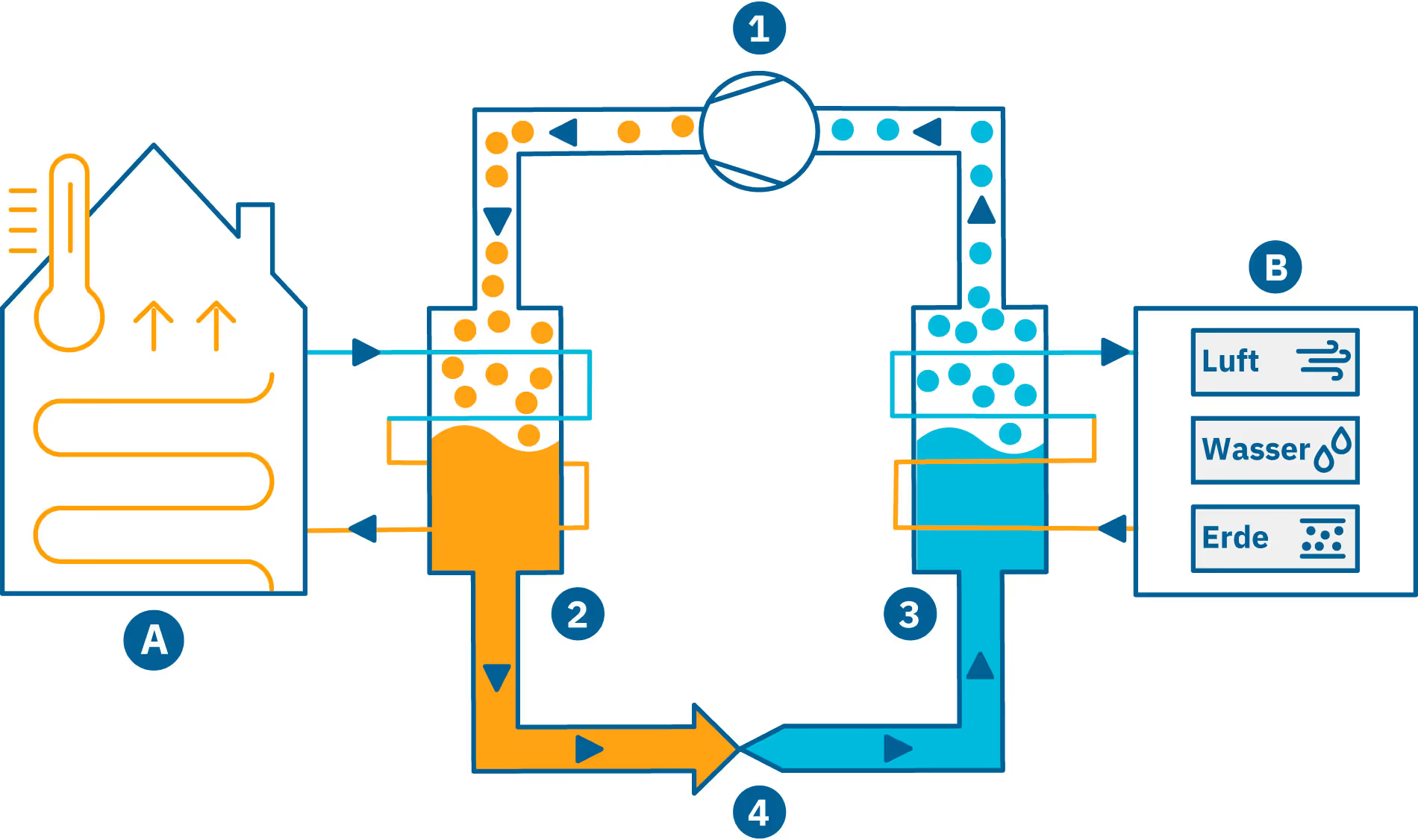.avif)
The basics of a heat pump
In der Luft, in der Erde und im Wasser werden gewaltige Energiemengen gespeichert, die durch Sonneneinstrahlung und Niederschläge ständig erneuert werden. Mit der Wärmepumpen-Heizung ist es möglich, diese kostenlose Energie zu nutzen.
The heat pump converts lower temperature ambient heat into higher temperature heating. This conversion takes place in the compressor of the heat pump, which requires small amounts electrical energy to operate. The efficiency of a heat pump is reflected in its performance figure. The performance figures of heat pumps have continuously improved in recent years. They are calculated as the coefficient of the heating power in kW and the electrical drive power in kW. This value is more favorable, the lower the temperature difference between the heat supplied and the room heating. This simply means that the cooler it is in the air outside, the more energy it takes to heat the house.




.avif)


